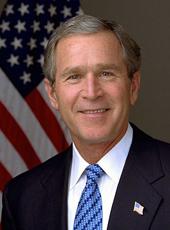
Fact Sheet: The Asia-Pacific Partnership on Clean Development and Climate Implementation, Action, and Results
"This new results-oriented partnership will allow our nations to develop and accelerate deployment of cleaner, more efficient energy technologies to meet national pollution reduction, energy security, and climate change concerns in ways that reduce poverty and promote economic development."
- President Bush, July 27, 2005
The United States has joined with Australia, China, India, Japan, and South Korea to launch the Asia-Pacific Partnership on Clean Development and Climate. This Partnership will advance the President's goal of developing and accelerating the deployment of cleaner and more efficient technologies and practices. Under this initiative:
- The Partner countries will work together and with private companies to expand markets for investment and trade in cleaner, more efficient energy technologies, goods, and services in key sectors.
- The Partner countries will establish an initial set of public/private task forces that focus on (1) cleaner use of fossil energy; (2) renewable and distributed generation; (3) power generation and transmission; (4) aluminum; (5) steel; (6) cement; (7) buildings and appliances; and (8) mining.
- The Partner countries will work with multilateral development banks on financing for initiatives and programs identified by the task forces that will expand the use of technologies and practices designed to promote objectives of the Partnership.
- The United States Government will propose $52 million in funding to support the work of the Partnership as part of the President's Fiscal Year 2007 Budget.
Addressing Climate Change in a Broad Pro-Growth Context
President Bush believes that the greatest progress will be assured by working together with other nations to advance the related objectives of improving economic and energy security, alleviating poverty, improving human health, reducing harmful air pollution, and reducing the growth of greenhouse gases.
The Partnership involves countries that account for about half of the world's population and more than half of the world's economy, energy use, and greenhouse gas emissions. This Partnership builds on existing multilateral climate initiatives including the Carbon Sequestration Leadership Forum, the International Partnership for a Hydrogen Economy, and Methane to Markets.
Our Work Plan:
In Sydney, the Partner countries committed to an action-oriented work plan that will promote the use of proven and emerging cost-effective clean technologies and practices by:
1. Accelerating the deployment of coal gasification and other clean coal technologies, particularly in those Partner countries with plentiful coal resources and rapidly increasing energy demand.
2. Expanding the use of renewables to provide lower-cost, clean power in areas without access to modern energy services.
3. Encouraging the power sectors in each Partner country to improve the efficiency and reliability of their electric power systems.
4. Developing and deploying advanced manufacturing processes for cleaner aluminum, cement, and steel production.
5. Strengthening adoption and use of building and appliance efficiency standards, using proven market approaches.
6. Capturing and using coal-bed methane as a clean energy source, and adopting new techniques and technologies to improve safety and reduce emissions in the mining sector.
George W. Bush, Fact Sheet: The Asia-Pacific Partnership on Clean Development and Climate Implementation, Action, and Results Online by Gerhard Peters and John T. Woolley, The American Presidency Project https://www.presidency.ucsb.edu/node/282471
